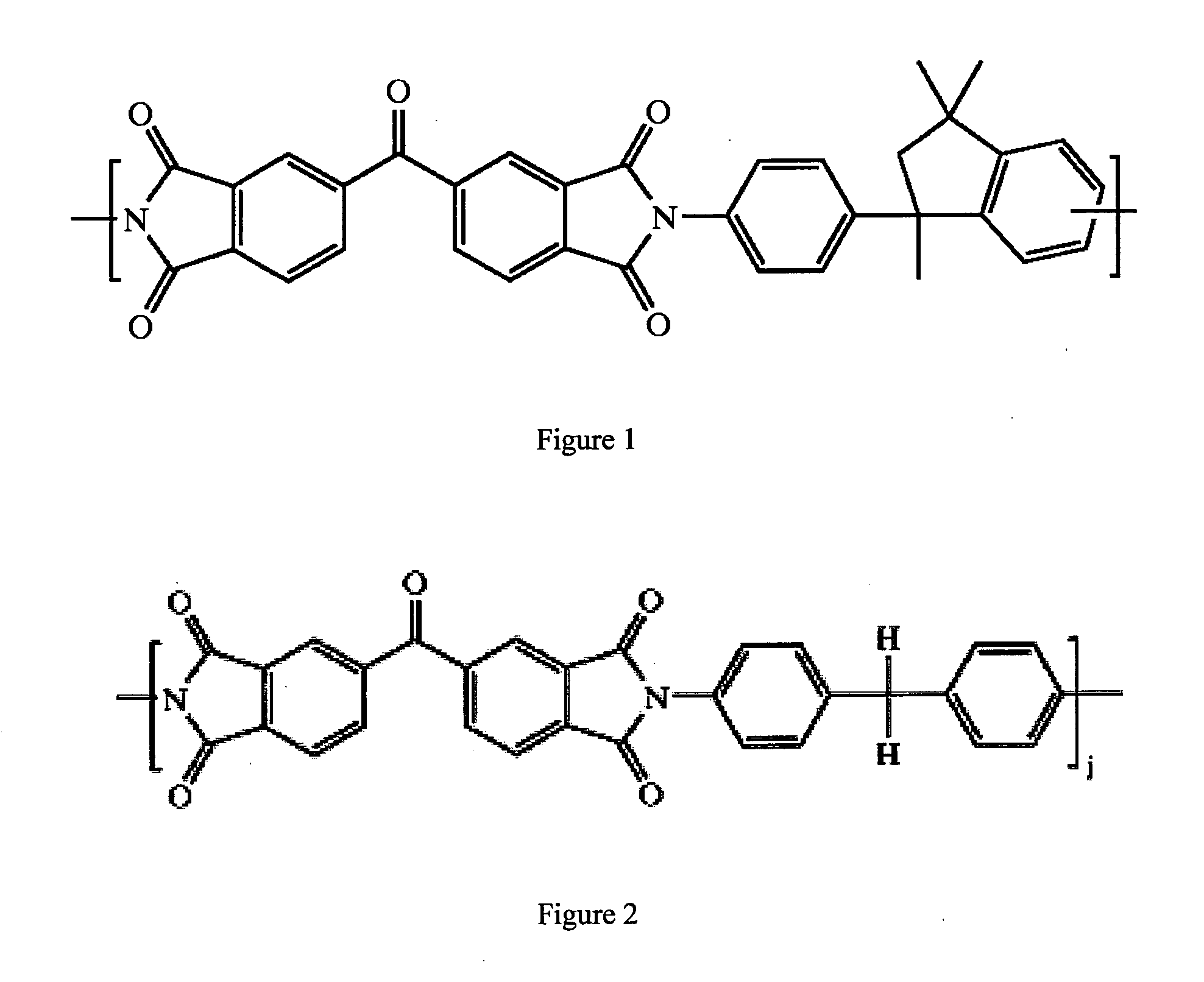Cross-linked polyimide membranes
a polyimide membrane and cross-linked technology, applied in the direction of separation processes, ultrafiltration, water/sludge/sewage treatment, etc., can solve the problems of membrane polymer dissolution, lack of membrane stability, and decrease of selectivity
- Summary
- Abstract
- Description
- Claims
- Application Information
AI Technical Summary
Benefits of technology
Problems solved by technology
Method used
Image
Examples
example 1
[0028]An 18 wt % solution of matrimid 9725 polyimide (Huntsman) was made in NMP and THF (ratio 2:1) by stirring overnight. The polymer solution was cast on a polypropylene non-woven support by an automated casting device set at a gap of 250 μm. The resulting film was immersed in a de-ionized water bath after 30 s of evaporation.
[0029]Parts of the resulting membrane were immersed in a solution of p-xylenediamine in methanol for cross-linking. After 5, 60 and 120 minutes, the membrane slabs were removed and rinsed with methanol to remove all reactant. The membranes were then immersed in IPA until use for immersion experiments. Parts of the cross-linked membranes were immersed in DMSO for several days, after which they were again immersed in IPA until they were used for filtrations.
[0030]Filtrations were carried out in a stainless steel dead-end filtration cell, pressurized with nitrogen gas to 6 bars, with a solution of bengal rose in WA (35 μM) on top of the cross-linked membranes, b...
example 2
[0031]Membranes were prepared and cross-linked as in example 1. Cross-linked membrane slabs were immersed in NMP for several days. Uncross-linked membrane slabs were immersed in NMP in which they dissolved after some hours. Filtrations were carried out as in example 1. The results show that 60 minutes or longer cross-linked membranes retain their excellent performance in WA after immersion in NMP.
after immersionbefore immersionin NMPwt %Cross-linkingpermeancerejectionpermeanceRejectionPI(minutes)l / m2 bar h%l / m2 bar h%1852.2292.91.0898.3(high occurrenceof defects)18600.8597.12.0598.2181200.7596.41.7997.2The first result proves the non-obvious success of a chemical modification to a membrane.
example 3
[0032]Membranes were prepared and cross-linked as in example 1, but an NMP-exchanged clear solution (NMP-CS) was added as an extra component to the polymer casting solution. This NMP-CS emulsifies the polymer dope before casting, which was further treated as in example 1. During this modified phase-inversion process called ‘solidification of emulsified polymer dope by phase inversion’ or ‘SEPPI’ (Gevers, 2006), a membrane is created with uniform spherical pores that is more resistant to compaction at high pressures. Membranes were further treated as in example 1. Cross-linked membrane slabs were immersed in DMF. Uncross-linked slabs that were immersed in DMF dissolved completely after some hours. Filtrations were carried out as in example 1.
[0033]Results show that a cross-linking treatment of 60 minutes or more is sufficient to create membranes stable in DMF, which retain their excellent performance in IPA after immersion in DMF.
before immersionafter immersionin DMFin DMFwt %Cross-l...
PUM
| Property | Measurement | Unit |
|---|---|---|
| molecular weight | aaaaa | aaaaa |
| molecular weight | aaaaa | aaaaa |
| molecular weight | aaaaa | aaaaa |
Abstract
Description
Claims
Application Information
 Login to View More
Login to View More - R&D
- Intellectual Property
- Life Sciences
- Materials
- Tech Scout
- Unparalleled Data Quality
- Higher Quality Content
- 60% Fewer Hallucinations
Browse by: Latest US Patents, China's latest patents, Technical Efficacy Thesaurus, Application Domain, Technology Topic, Popular Technical Reports.
© 2025 PatSnap. All rights reserved.Legal|Privacy policy|Modern Slavery Act Transparency Statement|Sitemap|About US| Contact US: help@patsnap.com



